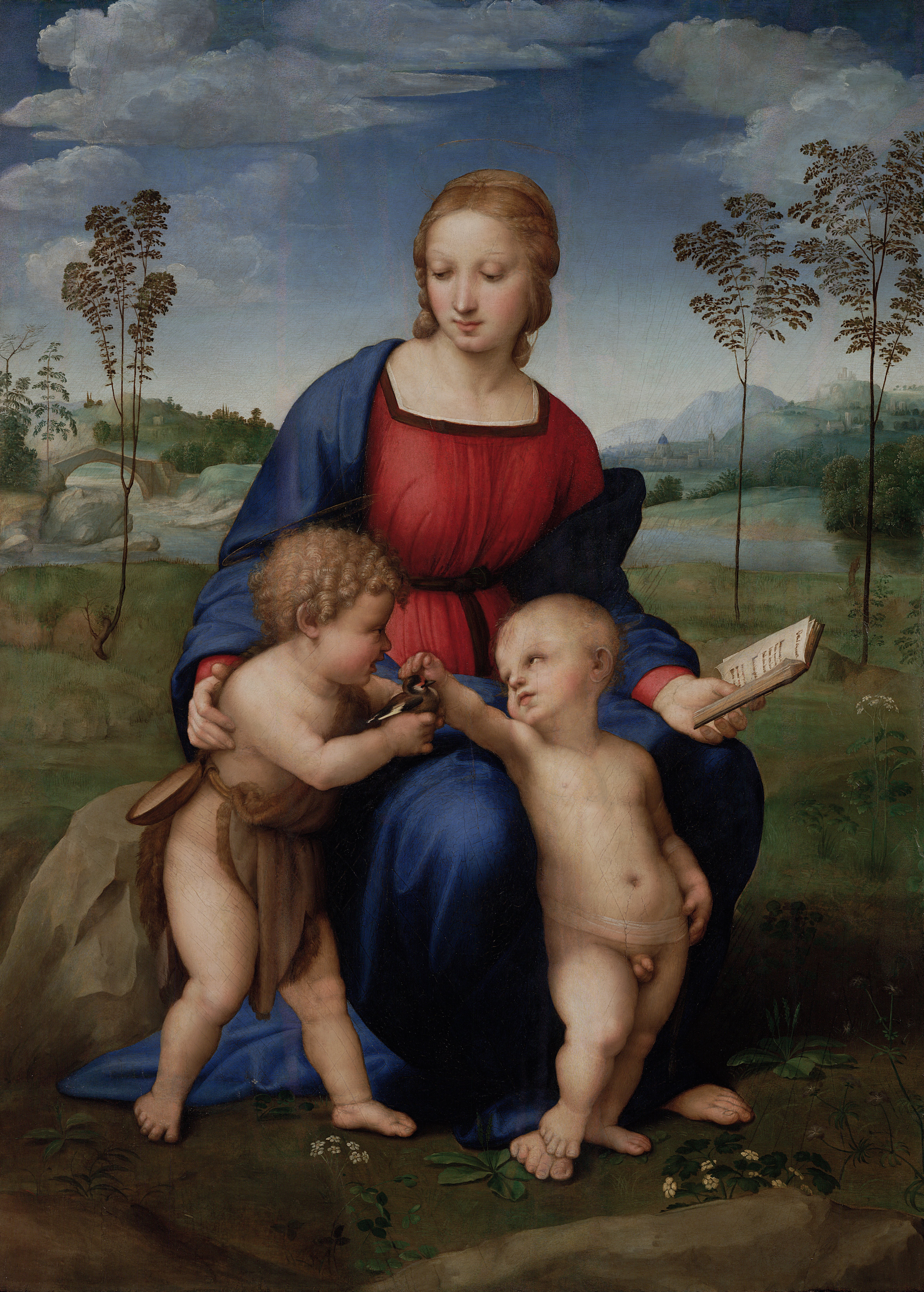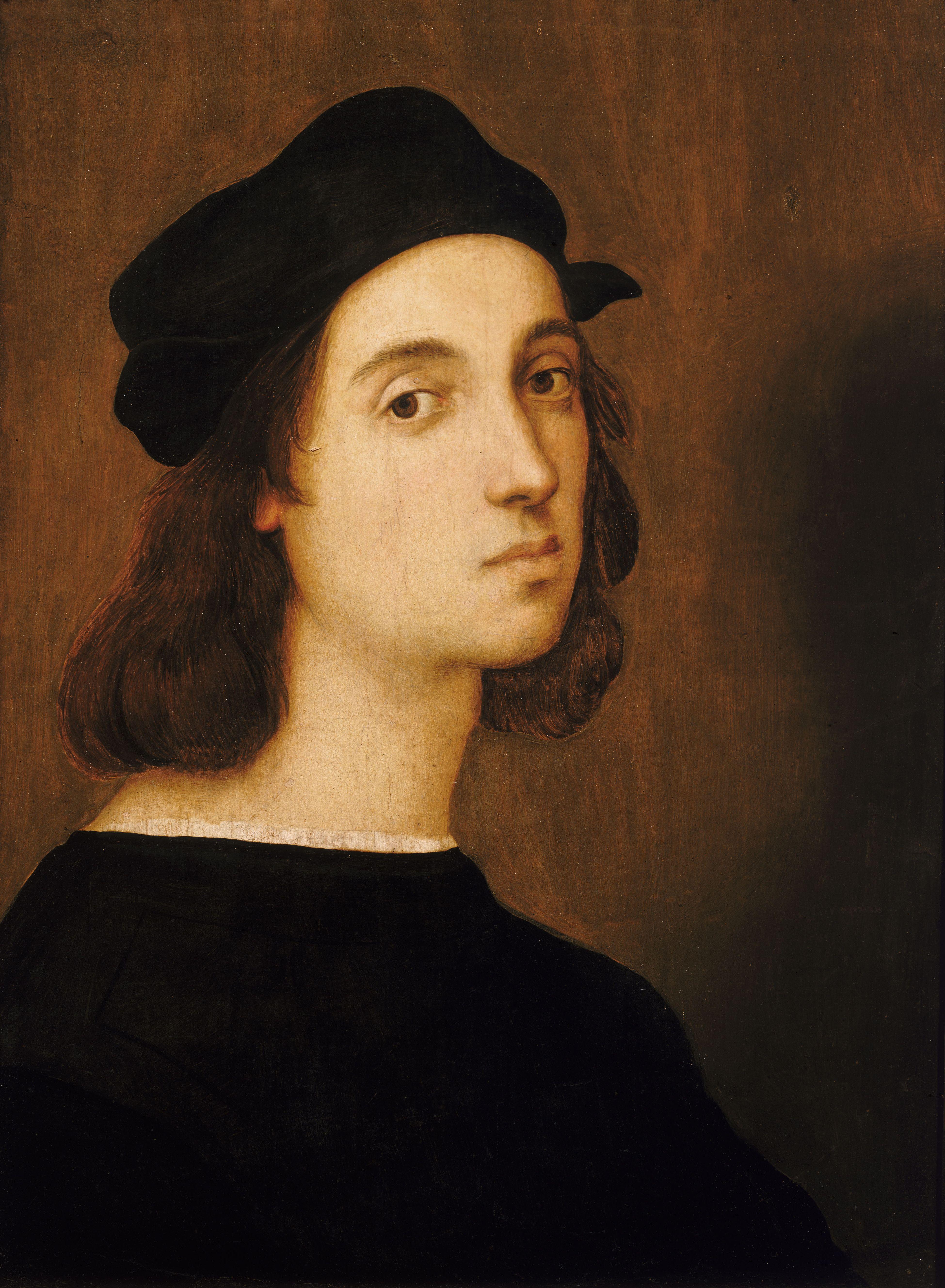In Madonna Del Cardellino, the goldfinch represents Christ’s crucifixion. The reason for its association comes from the legend that its red spot was born at the time of the crucifixion. It flew down over the head of Christ and was taking a thorn from His crown, when it was splashed with the drop of His blood. The book in Mary’s hand reads Sedes Sapientiae or “The Throne of Wisdom.” This term usually is applied to images in which Mary is seated upon a throne, with Jesus on her lap, but in this case, the inscription implies the rock on which Mary sits is her natural throne.
In this painting, as in most of the Madonna’s of his Florentine period, Raphael arranged the three figures - Mary, Christ and the young John the Baptist - to fit into a geometrical design. Though the positions of the three bodies are natural, together they form an almost regular triangle. The Madonna is shown young and beautiful, as with Raphael’s various other Madonna’s. She is clothed in red and blue, also typical, for red signifies the passion of Christ and blue was used to signify the church. Christ and John are still very young, only babies. John holds a goldfinch in his hand, and Christ is reaching out to touch it. The background is one typical of Raphael. The natural setting is diverse and yet calmly frames the central subject taking place. The Madonna was a wedding gift from Raphael to his friend Lorenzo Nasi. On November 17, 1548 Nasi's house was destroyed by an earthquake and the painting broke into seventeen pieces. It was immediately taken to be salvaged, and was hastily put back together, though the seams were quite visible. In 2002, George Bonsanti of the Precious Stones organization gave the task of restoration to Patrizia Riitano. During the six-year process that followed, her team worked to remove the years of grime that had degraded the painting's color, and to fix the damage done by the earthquake long ago. Before beginning the project, they studied the work as closely as possible, utilizing resources such as X-rays, CAT scans, reflective infra-red photography, and even lasers. Riitano closely studied the past quick fix layers that had been applied and removed them until the original by Raphael finally shone through. The restoration was completed in 2008, and the painting was put on display in Uffizi.
This painting was requested by one of our users - happy birthday Carmen :)


 Raphael Santi
Raphael Santi